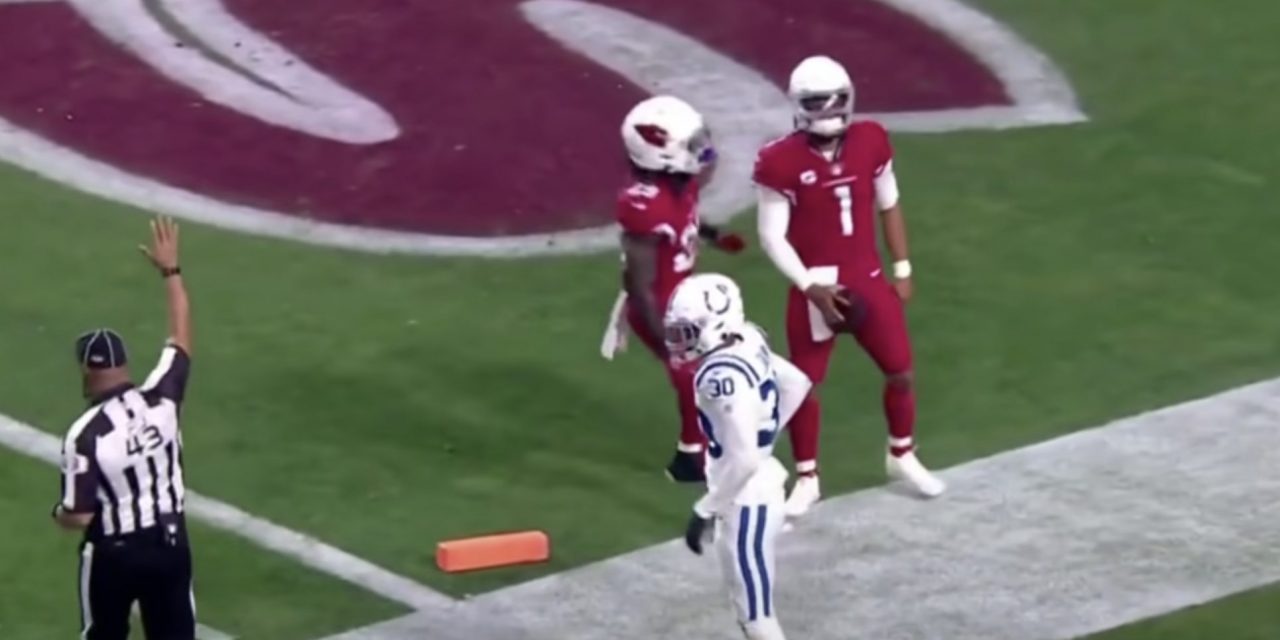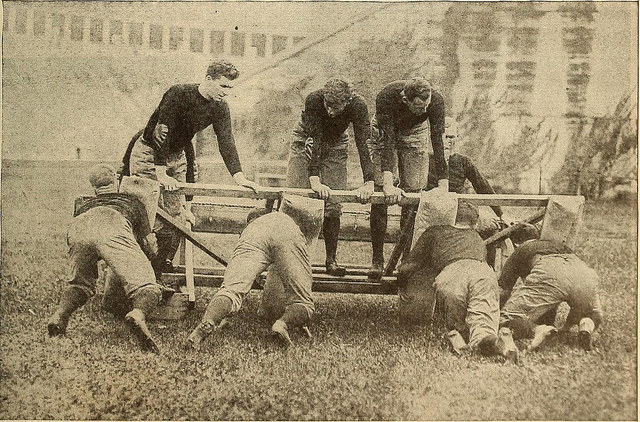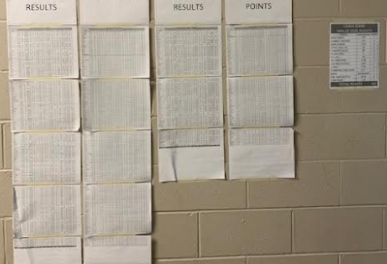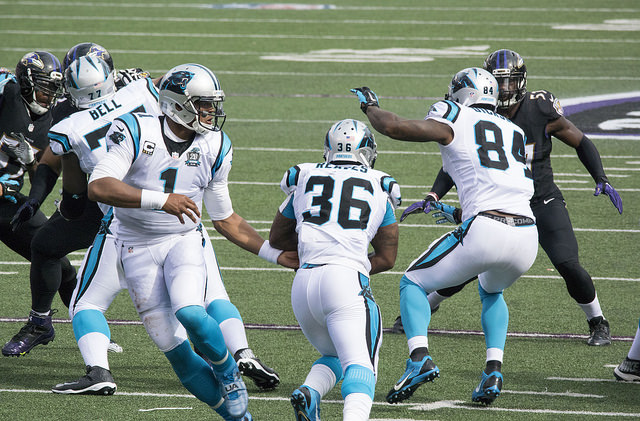Should you add Quarterback Draw to your run game package?
Imagine this scenario…..you have a pretty good offense that gives you options to throw and run the ball from different sets, and you are feeling good about what you have going.
Then you come into an off-season where your next quarterback is an athletic kid.
Now picture yourself rolling around in money, because this scenario is the coaching equivalent of winning the lottery.
If you already have a solid offensive plan, the addition of a running quarterback can move you from a dangerous team, to a team that will keep defensive coordinators up at night.
I love talking to defensive coaches about what they fear most, and at the very top of the list is a quarterback that can run.
This is much higher on their list than a quarterback with great accuracy, as it forces them to always be weary of the run, even in down-&-distances and formation that are usually pass-first.
Because of this, within our program we are now starting within the junior high program moving our best athletes to the quarterback position to see if they can handle the mental and physical side of the game.
If they can, we know we are able to continue to have this option within our offense.
If you do make the decision to go this route, or even have it for one year, you can go one of two ways.
You can create ways in which you can get your quarterback to run the plays your tailback already runs, or if you are afraid to run power-type plays with him, you can create a simple option that gets your quarterback running the ball within a scheme that is simple to create.
For us, that scheme is the quarterback draw.
If you are still uncertain about continuing on with this article, turn up the volume and check out this video.
As you can see, this is not Cam Newton or Denard Robinson running the ball. Just an athletic kid that can use his feet to create first downs.
WHY THE QUARTERBACK DRAW IS SO EASY TO INSTALL
This play is easy to install because you most likely already have a simple scheme that connects within your run game or your pass-protection.
If you have big-on-big pass protection that puts your tailback on an inside linebacker, then you have a quarterback draw scheme.
Or, if you run Tailback Iso, you also have your quarterback draw scheme.
Either of these pieces that you already have within your offense can be easily adapted to make your quarterback the ball carrier.
Not to mention the fact that if you throw the ball at all, your quarterback already knows the footwork necessary to run the draw.
He is going to get into his drop with his eyes toward the area of your choosing, then take off.
It’s that simple.
This is not a play that only Dabo Swinney can design.
This is a play that can be easily installed by even a pee-wee team.
ADAPTATIONS AND PRE-SNAP RPOs FOR YOUR QUARTERBACK DRAW
Once you get your basic quarterback draw scheme created, you can attach perimeter screens or route concepts to protect it.
If you allow a team to run a seventh defender into the box at the snap of the ball, you will not have the gain you intend your scheme to create.
But, if the defense knows you have an attached screen or pass concept, it will force them to play straight, or willingly take the chance of giving up a big play.
Let them make the decision on how big of a gain they are going to give-up.
As the game progresses, if the play is working, the defense will at different times give you both options in an attempt to figure out how best to stop it.
The first idea to consider is having a screen on the perimeter.
You can have a Bubble Screen or a Slip Screen, to enable you to throw the ball if the seventh defender does not stay over your #3 receiver.
Even if your OLine portion of the concept is run-based, a screen pass will go behind the line of scrimmage, so you will have no issues regarding penalties.
The read for the quarterback is simple….once you receive the snap and are getting into your drop, keep your eye on the seventh defender.
If he stays on the perimeter, run the ball.
If he runs into the box, throw the screen.
That simple!!!
And the great part about getting into your drop first is it not only makes the defense think it’s a pass but also allows your quarterback to be in a comfortable position to throw the ball if his read tells him to do so.
Another option to make your quarterback draw dynamic is to add a concept.
Many different concepts can be added to this, and I imagine you already have something within your pass game that can be added to ensure your players do not have to have to learn something new.
Concepts such as Hitches, Sticks, and Snag can be used to get three receivers into an area in which two defenders cannot
cover them.Or, any other quick game concept you have that keeps all three receivers outside the box will most likely work.
And as long as it is a quick game concept that is attached, you should be able to get the ball out quickly enough to ensure there are no penalties for having offensive lineman downfield.
The final item you need to think about is what to do if your running back is not an aggressive blocker.
This is frequent within high school football, because usually your tailback has been one since birth, and is only good at running the ball.
If this is the case, do not be swayed from running the quarterback draw.
You can add a tailback swing to the play, and adjust the defender you are reading.
This simple adjustment only involves the quarterback changing his read from the seventh defender to the sixth defender.
Tell him to keep his eyes on the Mike.
If the Mike runs with the tailback, run the ball.
If he stays in the box, throw it.
One way to make this read easier is to have the tailback go in motion during the cadence.
It forces the Mike to make a decision earlier, as even the best Mike linebacker cannot get to the perimeter after the ball is snapped.
If you do this, the quarterback will now know before the ball is snapped if he is going to run or throw the ball.
Or, if you want to get REALLY CRAZY off the quarterback swing- draw RPO, check out this video from Jason talking about the 2019 LSU offense.
TO PROTECT YOURSELF IN ADVANCE OF THE SEASON….
One of the things teams can do to stop your quarterback draw is to play cover zero.
They can bring their Sam linebacker into the box, and put a second safety over one of your inside receivers.
To stop this, make sure you have a great cover zero concept to run, or a slip screen that gets your offensive lineman out in space.
Again, the more the defense sees on film or during the game that protects this play, the less likely they are to be aggressive with blitzes and coverage.
The other thing teams can do that is less aggressive and less-susceptible to give up a big play, is to twist their defensive lineman.
This allows them to stay in a more conservative coverage, while using their front to create confusion within your offensive line.
This often creates a mess within the gaps you are trying to run, and stops the momentum of your quarterback.
This is something you will have to address when teaching the play, but do not allow this to stop you from installing the quarterback draw.
On paper, it may not look like your best option, but if your quarterback is dynamic enough, and you can keep an offensive lineman body on every defensive lineman body, your quarterback can still create positive yards.
Simply address the things the defensive front can do, and walk through them.
The more your offensive line sees these stunts (they need to see them anyway during initial pass protection periods), the more comfortable they will be picking them up.
CONCLUSION
I always feel as if my best coaching moves are the most simplistic.
You do not need to be Sean-Payton-esque to create a dangerous scheme.
Simply take what you already have, and adapt it with different players and different formations, or adding two plays into one.
The quarterback draw is a perfect example of this, and once you are able to put this into your offense, you will understand how you can create simple adjustments to create even more advantages for your players.
Do not be afraid to be creative!
You know more than you think, and your players will appreciate how much fun they will have learning and playing offense.





